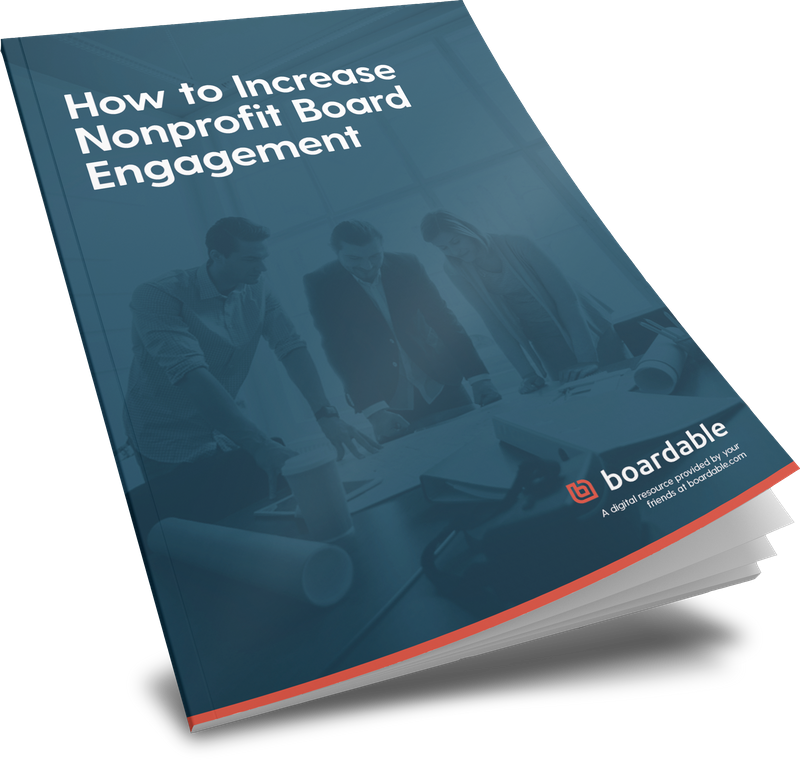IT & Cloud Modernisation:
A Crucial Future-Proofing Step

Table of Contents.
What is IT and Cloud Modernisation? Key Components of IT & Cloud Modernisation Best Practices for IT & Cloud Modernisation on Google Cloud People Considerations Cloud Providers and Platforms for Modernisation Challenges and Considerations for IT & Cloud Modernisation Real-World Cloud Mod Case Study: How Lush Saved 40% on Hosting Costs and Moved to a Greener Solution Time for Action: Let’s Modernise Your Cloud Infrastructure TogetherThe days of businesses relying on traditional IT systems to meet their operational needs have passed.
As customer demands and competition have grown, these systems have proven to be inadequate in providing the necessary agility, scalability, and cost-efficiency required to stay ahead of the game.
That's where modernisation comes in. It's a crucial step towards future-proofing businesses and remaining relevant in today's dynamic landscape.
In this guide, we'll take you through the key components, best practices, challenges, and considerations of IT and cloud modernisation, so you can make informed decisions and drive innovation in your organisation.
What is IT and Cloud Modernisation?
IT and cloud modernisation is the process of updating and improving a business’s IT infrastructure to meet the evolving demands of today’s digital landscape. It involves updating legacy systems, adopting new technologies and platforms, and implementing best practices for IT operations.
IT and cloud modernisation is crucial for businesses as it helps them stay competitive in today’s fast-paced market. By modernising their IT infrastructure, businesses can:
- Improve their agility and responsiveness to changing business needs
- Enhance their security and compliance posture
- Increase their operational efficiency and reduce costs
- Enable faster time-to-market for new products and services
- Improve the overall customer experience
- Modernising IT and cloud infrastructure can also help businesses better leverage emerging technologies such as artificial intelligence, machine learning and the Internet of Things (IoT) to drive innovation and growth.
Key Components of IT & Cloud Modernisation

When it comes to modernising your IT and cloud infrastructure, there are several key components to consider. These include:
- Migration Strategies: Moving your applications and data from on-premises systems to the cloud can be a complex process. Having a well-defined migration strategy in place is crucial for ensuring a smooth and successful transition.
- Infrastructure as Code: Infrastructure as code (IaC) allows you to manage your infrastructure through code, enabling you to automate the provisioning and management of your resources. This approach can help you to improve efficiency, reduce errors, and increase consistency.
- DevOps and Agile Methodologies: DevOps and agile methodologies are approaches to software development and deployment that emphasise collaboration, automation, and continuous delivery. Adopting these methodologies can help you to accelerate your development cycles and improve the quality of your applications.
- Microservices Architecture: Microservices architecture is an approach to application development that involves breaking down large, monolithic applications into smaller, more modular components. This approach can help you to improve agility, scalability, and resilience.
- Cloud-Native Application Development: Cloud-native application development involves building applications that are designed to run natively in the cloud. This approach can help you to take advantage of the scalability and flexibility of cloud computing, enabling you to build more responsive and efficient applications.
By understanding and implementing these key components, businesses can leverage the benefits of modernisation and stay ahead of the competition.
Best Practices for IT & Cloud Modernisation on Google Cloud
When modernising IT and cloud infrastructure, businesses should follow best practices to ensure a smooth transition. Here are some key best practices to consider:
- Building a business case: Before starting a modernisation project, it's important to identify the business benefits that the project will deliver. This includes identifying potential cost savings, increased productivity, and improved customer experience.
- Establishing a cloud governance framework: A cloud governance framework defines the policies, procedures, and standards that govern the use of cloud services within an organisation. This ensures that cloud services are used in a secure, compliant, and cost-effective way.
- Conducting a thorough assessment of existing IT infrastructure: This involves evaluating the current IT infrastructure, identifying areas that need improvement, and prioritising which areas to modernise first. It's important to identify any legacy systems, technical debt, and potential security risks.
- Consider implementing a landing zone: A great landing zone provides a structured approach to discovery, which helps to keep your cloud environments consistent, compliant and adaptable.
- Implement a phased approach to modernisation: It's recommended to approach modernisation in a phased manner, starting with low-risk areas and gradually moving to more complex areas. This minimises disruption to the business and reduces the risk of failure.
- Investing in cloud managed services: Cloud managed service providers can help businesses with the migration process, provide ongoing support, and ensure that the cloud environment is optimised for performance, security, and cost-effectiveness. This can help businesses save time and resources while achieving the desired business outcomes.
People Considerations

In addition to the technical components of IT and cloud modernisation, it's important to consider the people involved in the process. Training, enablement, skills, and culture are all key factors that can determine the success or failure of a modernisation project.
Adoption, acceleration, and innovation are also important considerations. Businesses need to ensure that their employees are willing and able to adopt new technologies and processes, accelerate the pace of innovation, and embrace a culture of continuous improvement.
Ultimately, it's important to recognise that people, talent, and culture are just as important as technology and organisational design when it comes to IT and cloud modernisation. Focusing on these factors can help businesses achieve their modernisation goals more effectively and efficiently.
Cloud Providers and Platforms for Modernisation
When it comes to modernising your IT and cloud infrastructure, choosing the right cloud provider and platform is crucial. Some of the major cloud providers that offer IT and cloud modernisation services include Google Cloud Platform (GCP), Amazon Web Services (AWS) and Microsoft Azure, and.
Each of these providers has its own set of features and benefits, and choosing the right one for your business can be a daunting task.
Google Cloud Platform (GCP)
Google Cloud Platform (GCP) is a cutting-edge cloud platform that offers a range of advanced technologies and machine learning capabilities. GCP is known for its innovative solutions and commitment to open source technology, making it a popular choice for businesses looking to modernise their IT and cloud infrastructure. GCP is second to none in the cloud space across a number of areas including its security features, its handling of data and AI and also its sustainability efforts.
Amazon (AWS)
Amazon Web Services (AWS) offers cloud infrastructure that provides a wide range of services and solutions for businesses of all sizes. AWS offers a flexible pricing model that allows businesses to only pay for the services they need, making it a cost-effective option for modernising IT and cloud infrastructure.
Microsoft Azure
Microsoft Azure is another cloud platform that is known for its robust security features and seamless integration with Microsoft products. With Azure, businesses can easily migrate their existing applications and data to the cloud, while also benefitting from a range of powerful tools and services.
Multi-Cloud Setups
It's also worth noting that you don't necessarily have to choose just one cloud provider or platform. Hybrid and multi-cloud solutions are becoming increasingly popular, allowing businesses to take advantage of the strengths of different providers and platforms.

The strengths of Google Cloud are in its end-to-end solutions across geolocation, collaboration and digital workplace, and cloud that provide businesses with a comprehensive toolkit to make the most of cloud.
Ultimately, whether you opt for GCP or not, the key is to choose a cloud provider and platform that aligns with your business goals and can help you achieve your modernisation objectives.
Challenges and Considerations for IT & Cloud Modernisation
When modernising IT and cloud infrastructure, businesses may face various challenges and considerations that they should be aware of. Here are some of the common ones:
- Legacy systems and technical debt: Legacy systems and technical debt can hinder modernisation efforts as they may not be compatible with modern cloud technologies. To overcome this, businesses should assess their existing infrastructure and create a plan to migrate or replace legacy systems.
- Data security and compliance: Moving to the cloud can raise concerns around data security and compliance. To mitigate these risks, businesses should choose a provider that offers robust security and compliance features and implement strict access control policies.
- Employee training and upskilling: The success of IT and cloud modernisation depends on having a skilled workforce that can effectively use the new technology. Businesses should invest in employee training and upskilling to ensure their staff have the necessary skills to work with the new cloud infrastructure.
- Vendor lock-in: Businesses that rely too heavily on a single cloud provider may be at risk of vendor lock-in, which can limit their flexibility and control. To avoid this, businesses should consider using a multi-cloud approach, where they use different cloud providers for different services.
- Institutional memory: Institutional memory refers to the collective knowledge and experience of a business's staff. During IT and cloud modernisation, businesses may experience resistance from staff who are comfortable with existing systems and processes. To overcome this, businesses should involve staff in the modernisation process, communicate the benefits of the new technology, and provide training and support.
- Efficiency, automation, and repeatability: One of the main benefits of cloud modernisation is improved efficiency, automation, and repeatability. However, achieving these benefits requires a cultural shift in how businesses approach work processes. To achieve this shift, businesses should involve staff in the modernisation process, encourage a culture of innovation, and provide the necessary training and support.
- Total cost of ownership (TCO): It's important to consider the total cost of ownership (TCO) of a modernisation project, including not just the upfront costs of migrating to the cloud or modernising IT infrastructure, but also ongoing maintenance and management costs. This can help businesses make informed decisions about whether a modernisation project is financially viable and sustainable in the long term.
By being aware of these challenges and considerations, businesses can create a plan to overcome them and ensure a successful IT and cloud modernisation project.
Real-World Cloud Mod Case Study: How Lush Saved 40% on Hosting Costs and Moved to a Greener Solution
Thinking theoretically is great, but it’s always a bonus to see real-life results and examples. At Ancoris, we’ve plenty of cloud modernisation case studies to show the power and benefits of the cloud.
Handmade cosmetics company Lush were contracted to a fully managed service covering application, databases and server platform. The solution was both costly and gave them limited scope to control the constituent parts. They wanted to manage the application layers themselves and continue to use cloud hosting services as the server and database platform.

Ancoris supported Lush on their cloud adoption journey by helping to create an entirely new infrastructure of web servers, database servers, load balancers etc., before supporting the migration of data into Google Cloud Storage and manual restoration into Google Cloud SQL instances.
The project was delivered in just 22 days, and has led to Lush enjoying a 40% reduction in hosting costs. The additional benefit is that Google Cloud is 100% powered by renewable energy sources, and moving from PaaS (Platform as a Service) to IaaS (Infrastructure as a Service) aligns with their technology goals and their guiding ethics.
Time for Action: Let’s Modernise Your Cloud Infrastructure Together
Modernising your IT and cloud infrastructure can bring numerous benefits to your business, including increased efficiency, agility, and scalability. However, there are also several challenges and considerations that businesses should be aware of before embarking on such a project.
To ensure a successful modernisation project, you should follow the best practices outlined in this guide. It is also important to consider the people aspect, including training, enablement, skills, and culture, as this can significantly impact the success or failure of the project.
We encourage businesses to take action and embrace modernisation to stay competitive in today's rapidly evolving market. Contact Ancoris for more information and to see how we can support your cloud modernisation project. As a Google Partner, we have extensive experience of delivering cloud adoption, acceleration and innovation projects for leading brands around the world.
Navigate

Think big. Start now.
We don’t believe in Innovation, we live it. Innovation combined with pragmatism is what runs through our veins. We ask ourselves the same question over and over again: Does it deliver value? And how quickly? Your big ambitions can start now.